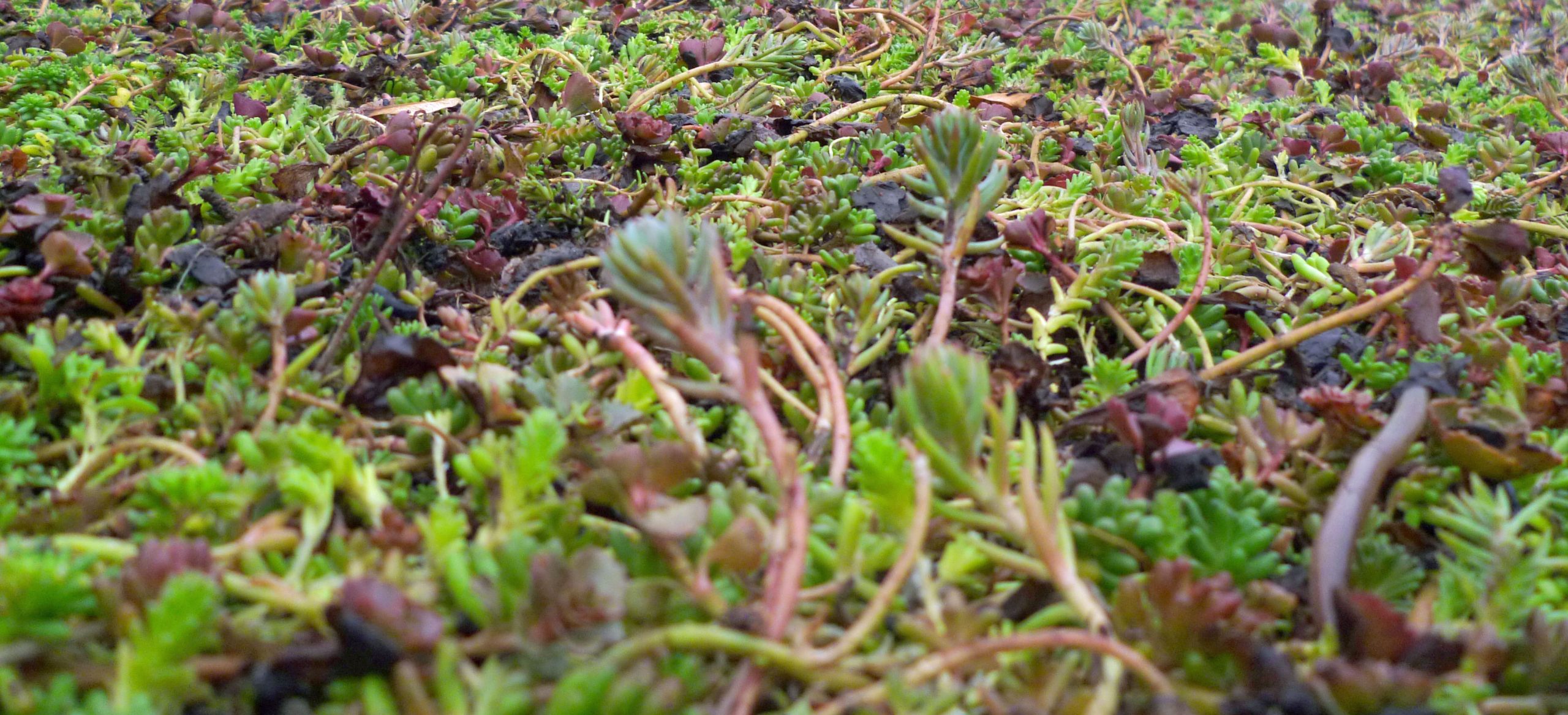Back to all news
Posted:
02 Feb 2017
Work is progressing well with the garden spaces at WYNG Gardens, the new development on Thompson’s Lane. Located in the rear garden is a ramp for pedestrians and cyclists allowing them to access the bicycle storage in the basement.
The ramp is shrouded in a timber and brick structure topped off with a flat roof at three different levels. This design includes ‘Green Roofs’, which offer many benefits and features to the residents and the environment.
Installation
A living ‘Green Roof’ is made up of the following layers on top of an effective waterproofed layer for the roof structure:
- A protection fleece, which is a felt-like layer around 6mm thick that offers protection to the roof and also acts as a capillary reservoir.
- A water retention board/layer, which is a plastic moulded layer with an ‘egg box’ like structure about 20/25mm thick. It traps and holds moisture from above, acts as a reservoir and discharges the moisture by capillary action to the roots of the plants above.
- A fleece/landscape fabric layer to prevent the growing medium falling into the ‘egg box’ pots of the water retention layer.
- The growing medium to a depth of around 55mm made up of brick dust and granular aggregates as well as organic material.
- A 150mm wide fringe of loose cobbles around the layers that provides a free draining channel, which links to the roof drainage system.
- The final layer on top of all this is the planting which is a mat of Sedum (large genus of flowering plants) including the following varieties: Sedum acre, Sedum album, Sedum ellacombianum, Sedum floriferum, Sedum forsterianum, Sedum hybridum, Sedum kamtschaticum, Sedum montanum, Sedum reflexum, Sedum selskianum, Sedum sexangulare, Sedum spurium. We will be adding a number of other plant species to the lower section of the roof to allow the planting to visually mix with the planting in the garden below.

Sedum WYNG green roof
Benefits
Below are some of the benefits the ‘Green Roof’ will offer.
Water management
- Particulate and atmospheric pollutants often come to rest on roofs, and therefore become dissolved with any run off. Green roofs capture and filter these pollutants and improve the water quality.
- The ‘Green Roof’ has the capacity to capture and hold a quantity of water therefore reducing storm water runoff. More information on this aspect is explained in the video Ever wonder where the rain goes?
Reduction of the Urban Heat Island (UHI) Effect
- The temperature in dense urban areas is often 2–3 degrees centigrade higher than the surrounding countryside. This is caused by materials which retain heat, such as concrete, tarmac and some roofing materials. UHIs disrupt local climatic cycles and this in turn puts stresses on the ecosystem and wildlife.
- Living ‘Green Roofs’ help to mitigate UHIs by regulating the surface temperature through absorption of sunlight.
- Reduction of temperature extremes also reduces the stresses on the waterproofing layer of the roof structure and extends their lifespan.
Acoustic benefits
- Living ‘Green Roofs’ absorb sound and can reduce sound penetration into the building below, whilst also mitigating the propagation of sound across the roof surface.
Amenity value
- A ‘Green Roof’ can add a great deal of value to buildings and developments as, with space for garden and green spaces at a premium, an otherwise ‘unused’ area can be turned into an eye-catching asset.
- At WYNG Gardens, the ‘Green Roof’ can be viewed from many of the resident’s room windows.
- Most importantly, ‘Green Roofs’ can look beautiful!